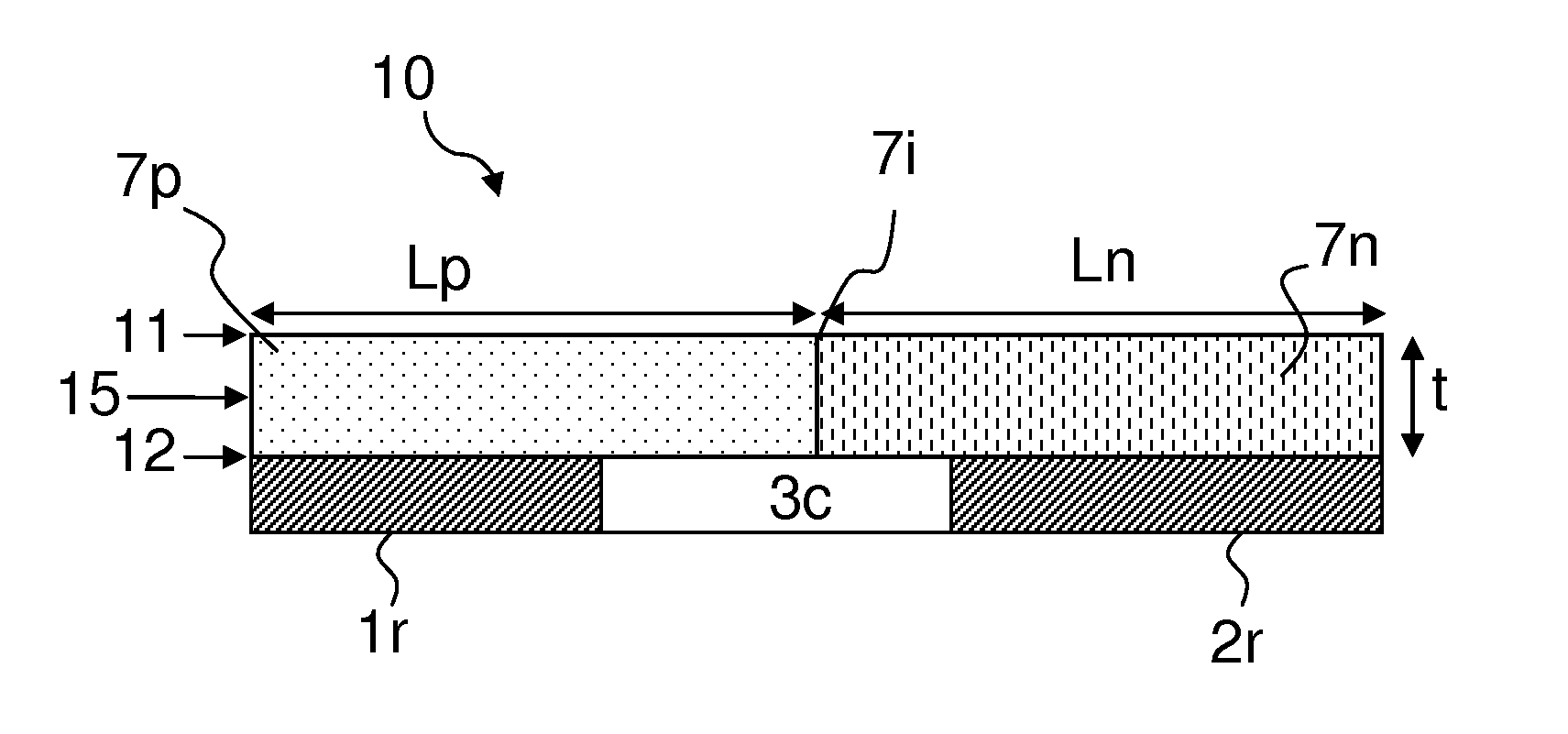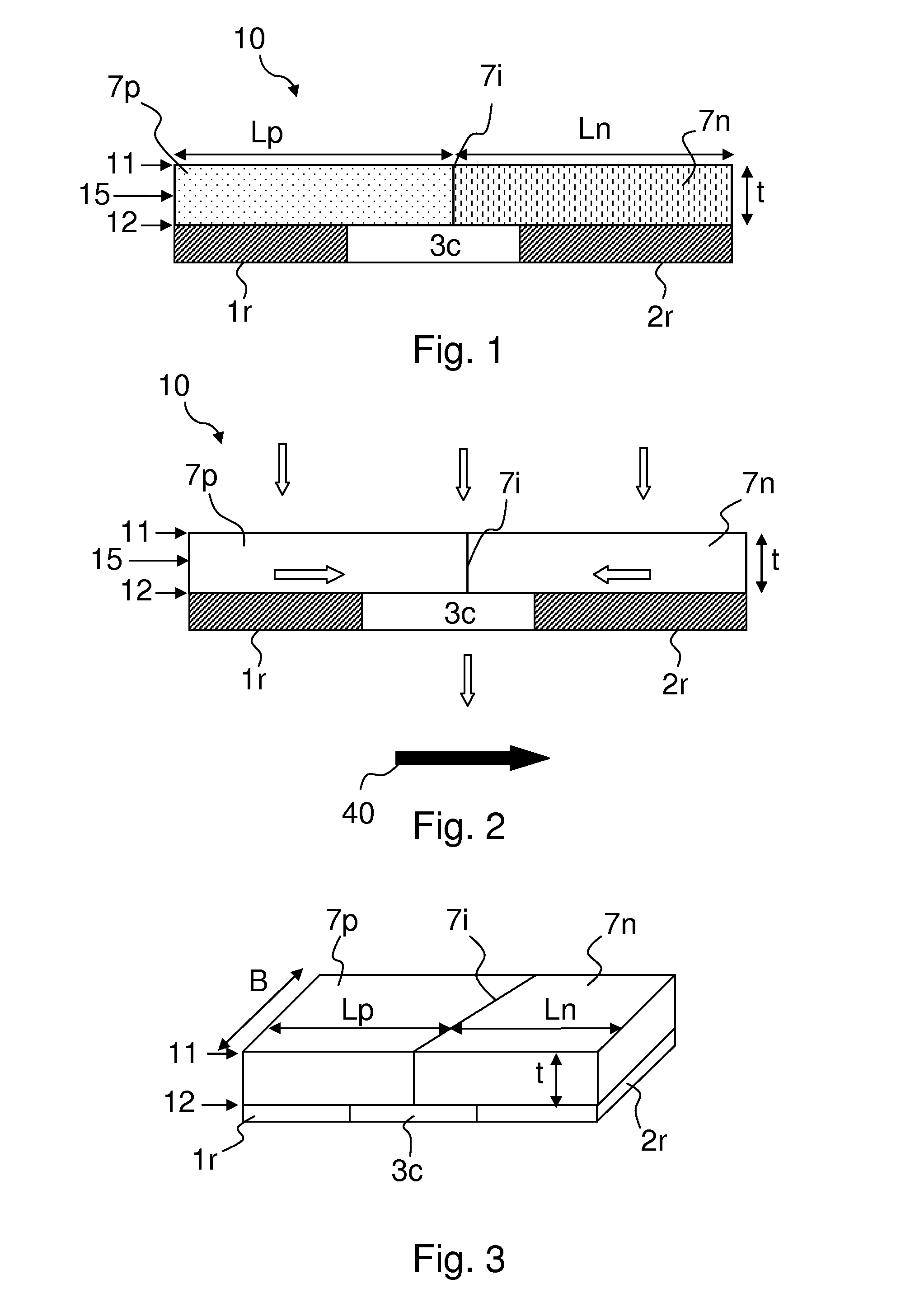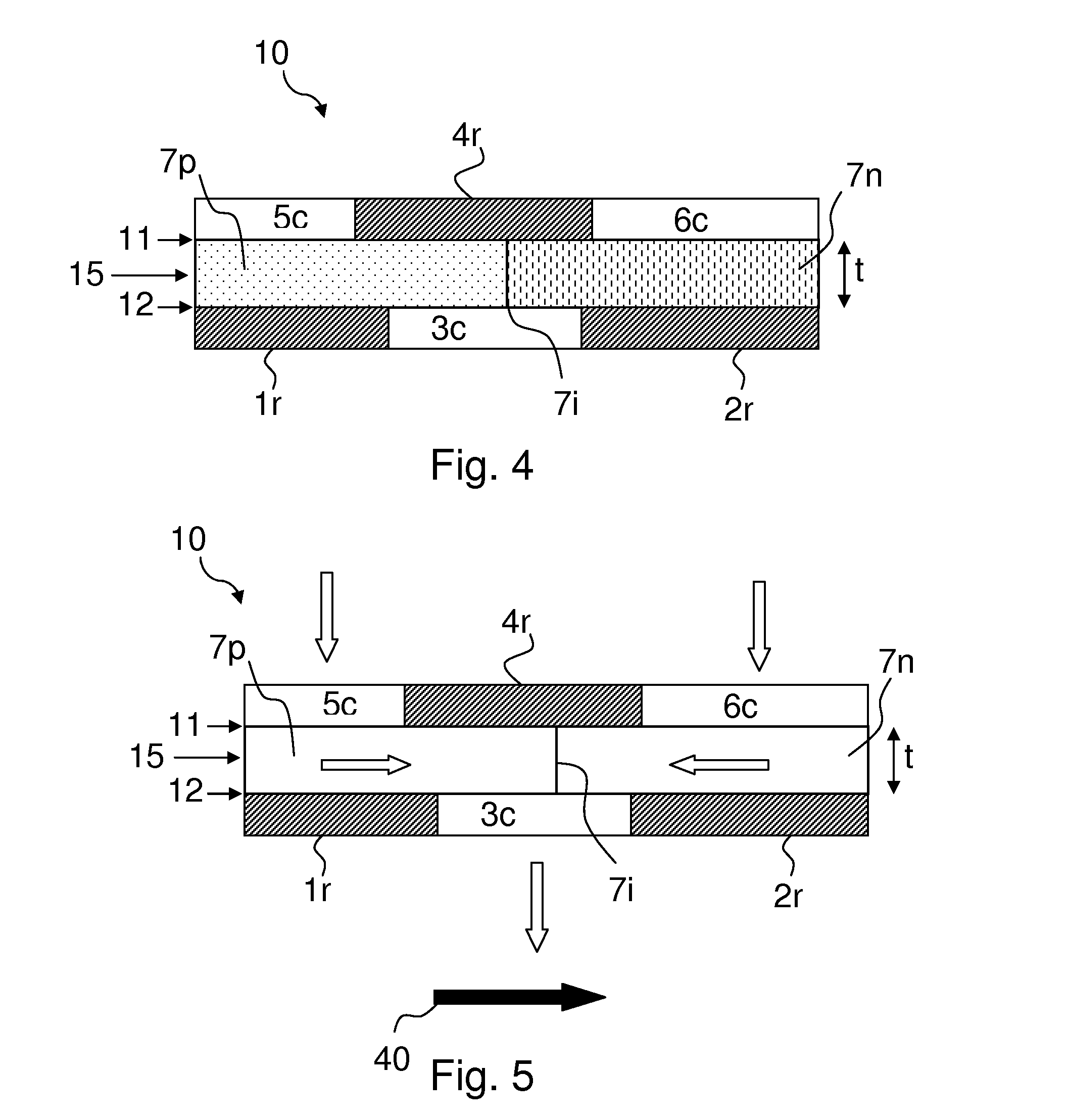Thermoelectric Conversion Module and Method for Making it
a conversion module and thermoelectric technology, applied in the field of thermoelectric modules, can solve the problems of not adapting the configuration, the shunt is not adaptable, and the challenge of using rejected gases with a lower temperatur
- Summary
- Abstract
- Description
- Claims
- Application Information
AI Technical Summary
Benefits of technology
Problems solved by technology
Method used
Image
Examples
Embodiment Construction
[0058]FIG. 1 shows a first embodiment of the thermoelectric module 10 according to the invention. The thermoelectric module 10 comprises a thermoelectric layer 15 of substantially constant thickness t. The thermoelectric layer 15 comprises an upper 11 and a lower 12 main surfaces that are separated by the thickness t. The thermoelectric layer 15 also comprises one p-type 7p and one n-type 7n portions. Each portion (7p, 7n) extends over the whole thickness t of the thermoelectric layer 15. Preferably, the whole thermoelectric layer 15 is made of a same material that presents a spatial variation of its doping in order to obtain the p-type 7p and n-type 7n portions. The terms ‘p-type’ and ‘n-type’ are known by the one skilled in the art. In another preferred embodiment, the p-type 7p and n-type 7n portions are made of two different materials. The thickness t is preferably comprised between 1 mm and 10 mm, and is more preferably equal to 8 mm. However, a larger or a smaller thickness t ...
PUM
 Login to View More
Login to View More Abstract
Description
Claims
Application Information
 Login to View More
Login to View More - R&D
- Intellectual Property
- Life Sciences
- Materials
- Tech Scout
- Unparalleled Data Quality
- Higher Quality Content
- 60% Fewer Hallucinations
Browse by: Latest US Patents, China's latest patents, Technical Efficacy Thesaurus, Application Domain, Technology Topic, Popular Technical Reports.
© 2025 PatSnap. All rights reserved.Legal|Privacy policy|Modern Slavery Act Transparency Statement|Sitemap|About US| Contact US: help@patsnap.com



